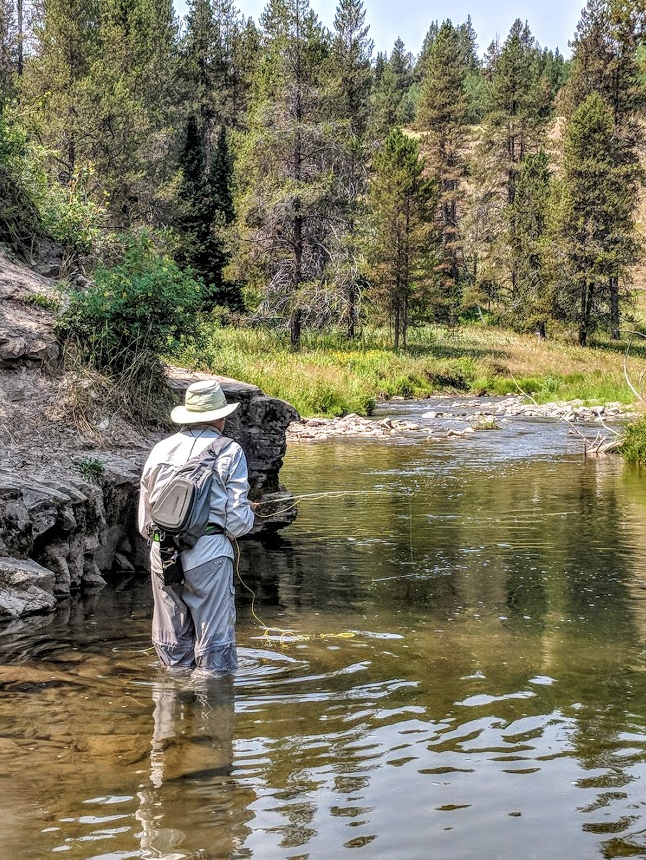An angler fishes a small mountain stream with a shorter, lighter fiberglass rod.
For years, I’ve gravitated to lightweight and shorter fly rods, simply because I usually spend my summers chasing trout in tight quarters along snaking backcountry streams. The shorter rod length lends itself to fishing among overhanging willows, allows for tighter casts, shorter backcasts and, honestly, a less “burdensome” experience while bushwhacking off the trail.
But that’s not always the case, as I’ve learned, even on small streams. Sometimes, having that extra foot or two of fly rod can increase your ability to adapt to unexpected situations.
For instance, even on small waters, a 9-foot rod isn’t always a bad choice, particularly when the brush is low and trout are spooky. The ability to high-stick a fly through a fishy run is much easier with a 9-foot rod than it is with, say, a 6-foot-6-inch “creek rod.”
As for weight, I almost always consider the fish I’m after. Bigger river fish demand at least a 5-weight, in my book. And not because a good angler can’t land a 22-inch brown with a 3-weight, but because the fight will be substantially shorter and much easier on the fish when it comes time for the release. Backcountry trout in skinnywater where presentation is more important than matching the hatch? That’s where your 3-weight (or your 2- or even 1-weight) comes in handy.
Fishing from a drift boat? Why go with a shorter rod that might limit your cast length? Or a lighter rod when you might have to deal with bigger flies and even a headwind? A standard 9-footer is perfect—adjust the weight to the conditions and the fish.
— Chris Hunt



